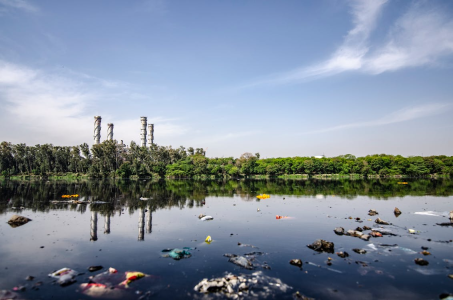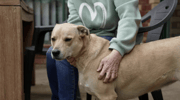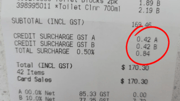This 20-second video might make you think twice about what ends up in your waterways
By
Maan
- Replies 0
Grim 20-second video exposes ‘disgusting’ impact of popular Aussie lunch.
A short but shocking video has revealed the dirty side of one of Australia’s favourite meals.
What should have been a simple lunchtime scene turned into a confronting look at just how much plastic waste we leave behind.
Now, calls are growing for urgent action before the problem gets even worse.
Walking just 20 seconds along George Street in Sydney’s CBD, Adam McKay filmed more than 160 red plastic soy sauce caps scattered along the gutter.
The caps came from the tiny fish-shaped bottles given out with sushi, discarded after being unscrewed and emptied.
Their small size makes them especially problematic—falling through drain grates, evading recycling machines, and ultimately piling up in landfill.
McKay’s video was shared with Australian startup Seabin, which tracks plastic pollution across Sydney.
Source: Instagram/seabin_project
Uploaded to social media, it was viewed over 440,000 times, sparking widespread concern.
Despite years of monitoring, Seabin’s data showed plastic waste levels across Sydney Harbour had not declined over the past five years.
The company’s CEO, Pete Ceglinski, said the footage filled him with ‘absolute frustration and disgust’.
‘My gut reaction watching the video is absolute frustration and disgust that, one, people can’t put their litter in the bin. And, two, Sydney prides itself on being sustainable and forward-thinking, and there’s just so much plastic pollution that goes from the streets and into the harbour,’ he said.
Ceglinski urged NSW to follow South Australia’s lead in banning plastic soy sauce containers.
NSW Environment Minister Penny Sharpe admitted there was ‘too much plastic’ in waterways and promised the government would announce further measures later this year.
‘Too much plastic is making its way into our waterways, our marine life, our food chain, and impacting on our health,’ she said.
‘NSW is working through changes that will reduce plastic — from design of products, to recyclability, to phasing out of products.’
Scientists have warned that plastics break down into micro and nanoplastics, with a French study estimating people inhale around 68,000 particles each day.
Plastics have already been detected in human blood, breast milk, and even organs.
In August, medical journal The Lancet went as far as to call plastic a ‘threat to humanity’ alongside climate change.
Simple alternatives already exist, with many sushi shops previously offering soy sauce in glass bottles, much like vinegar bottles in fish and chip shops.
Yet today, many outlets only supply plastic fish containers, even for customers dining in, raising questions about whether government intervention is the only solution.
Seabin bins, originally invented to collect harbour waste, now also serve as vital monitoring tools.
The company specifically tracks sushi-related plastics, including chopstick wrappers, wasabi sachets, and soy sauce containers.
Despite awareness campaigns, these products were entering Sydney’s waterways at an increasing rate.
In 2024, Seabin’s bins collected 1,608 sushi-related items.
By mid-2025, the number had already surged past 1,869, even though fewer bins were operating.
The company predicted the final 2025 total would be more than double last year’s.
It described the situation as ‘alarming’, warning that its bins filtered only a fraction of Sydney Harbour’s water, meaning much of the plastic pollution remained undocumented.
If you found the 20-second video confronting, you’re not alone—plastic waste from everyday items is sparking bigger conversations nationwide.
Some states have already started cracking down on the worst offenders, showing what change can look like when action is taken.
One recent move is set to make a noticeable difference in what you get with your takeaway meals.
Read more: Favourite takeaway extras disappear as new plastic ban targets everyday items

If the simple act of eating sushi leaves behind this much waste, how much plastic are we really prepared to swallow into our future?
A short but shocking video has revealed the dirty side of one of Australia’s favourite meals.
What should have been a simple lunchtime scene turned into a confronting look at just how much plastic waste we leave behind.
Now, calls are growing for urgent action before the problem gets even worse.
Walking just 20 seconds along George Street in Sydney’s CBD, Adam McKay filmed more than 160 red plastic soy sauce caps scattered along the gutter.
The caps came from the tiny fish-shaped bottles given out with sushi, discarded after being unscrewed and emptied.
Their small size makes them especially problematic—falling through drain grates, evading recycling machines, and ultimately piling up in landfill.
McKay’s video was shared with Australian startup Seabin, which tracks plastic pollution across Sydney.
Source: Instagram/seabin_project
Uploaded to social media, it was viewed over 440,000 times, sparking widespread concern.
Despite years of monitoring, Seabin’s data showed plastic waste levels across Sydney Harbour had not declined over the past five years.
The company’s CEO, Pete Ceglinski, said the footage filled him with ‘absolute frustration and disgust’.
‘My gut reaction watching the video is absolute frustration and disgust that, one, people can’t put their litter in the bin. And, two, Sydney prides itself on being sustainable and forward-thinking, and there’s just so much plastic pollution that goes from the streets and into the harbour,’ he said.
Ceglinski urged NSW to follow South Australia’s lead in banning plastic soy sauce containers.
NSW Environment Minister Penny Sharpe admitted there was ‘too much plastic’ in waterways and promised the government would announce further measures later this year.
‘Too much plastic is making its way into our waterways, our marine life, our food chain, and impacting on our health,’ she said.
‘NSW is working through changes that will reduce plastic — from design of products, to recyclability, to phasing out of products.’
Scientists have warned that plastics break down into micro and nanoplastics, with a French study estimating people inhale around 68,000 particles each day.
Plastics have already been detected in human blood, breast milk, and even organs.
In August, medical journal The Lancet went as far as to call plastic a ‘threat to humanity’ alongside climate change.
Simple alternatives already exist, with many sushi shops previously offering soy sauce in glass bottles, much like vinegar bottles in fish and chip shops.
Yet today, many outlets only supply plastic fish containers, even for customers dining in, raising questions about whether government intervention is the only solution.
Seabin bins, originally invented to collect harbour waste, now also serve as vital monitoring tools.
The company specifically tracks sushi-related plastics, including chopstick wrappers, wasabi sachets, and soy sauce containers.
Despite awareness campaigns, these products were entering Sydney’s waterways at an increasing rate.
In 2024, Seabin’s bins collected 1,608 sushi-related items.
By mid-2025, the number had already surged past 1,869, even though fewer bins were operating.
The company predicted the final 2025 total would be more than double last year’s.
It described the situation as ‘alarming’, warning that its bins filtered only a fraction of Sydney Harbour’s water, meaning much of the plastic pollution remained undocumented.
If you found the 20-second video confronting, you’re not alone—plastic waste from everyday items is sparking bigger conversations nationwide.
Some states have already started cracking down on the worst offenders, showing what change can look like when action is taken.
One recent move is set to make a noticeable difference in what you get with your takeaway meals.
Read more: Favourite takeaway extras disappear as new plastic ban targets everyday items
Key Takeaways
- A viral 20-second video showed 160 soy sauce caps littering Sydney streets.
- Seabin reported no drop in plastic waste across Sydney Harbour in five years.
- Experts warned plastics break down into particles people inhale daily.
- NSW is considering phasing out more single-use plastics after public pressure.
If the simple act of eating sushi leaves behind this much waste, how much plastic are we really prepared to swallow into our future?








